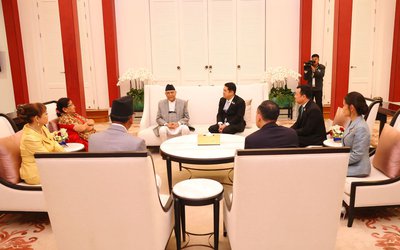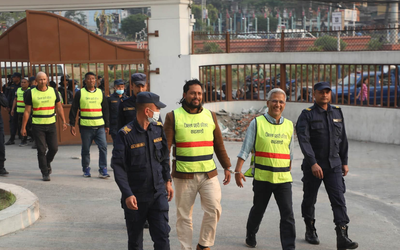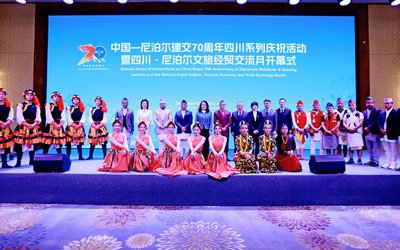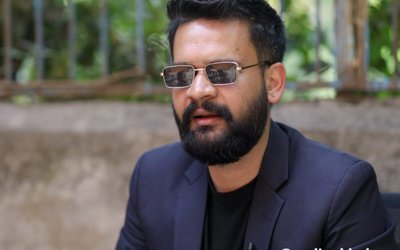More on News





Maoist violence, India's biggest internal security challenge, shows no sign of abating, with 2010 the worst year on record in terms of human casualties, and even more worrying a steep rise in the number of civilians killed.
Official figures released by Home Minister P Chidambaram earlier last month show 1,169 people died last year, the most since the armed rebellion began nearly four-and-a-half decades ago, and far more than terror and insurgency related deaths across the country, and in the troubled northeastern state of
"It will be apparent that the Naxalites [Maoists] have not only spurned the offer of [peace] talks but have also escalated the conflict," said Chidambaram, who has been spearheading a massive security operation against the rebels said, in the year end assessment of his ministry.
The spread of the Maoist insurgency is so vast across swathes of India's mineral-rich states that it is most improbable that it could be defeated by force alone. As is the case with the Taliban in Afghanistan, where the US military and its allies have been unable to defeat the insurgency after nine years, the Maoists have a strong grassroots power base.
India's stellar economic growth over the past decade has given rise to a consumer class of 300 million people, but more than 700 million people have been left behind, the majority of whom live on less than US$2 a day. These impoverished people, especially farmers, landless laborers and tribal minorities in remote areas, are the prime recruits of the Maoists.
Matters have clearly not gone right with the government's approach to the rebels. The 2010 toll includes 713 civilians (compared to 591 in 2001), 285 policemen (against 317 in 2009) and 171 suspected left-wing guerrillas (against 219 in 2009). Mineral-rich Chhattisgarh was among the worst affected, with the deaths 142 civilians and 164 security forces personnel. The state, in the center of India, witnessed the country's deadliest leftist attack in April as Maoist rebels killed 75 police.
In that attack, a government paramilitary force - mostly from the Central Reserve Protection Force - involved in flushing-out operations in the thick forests of Dantewada district was hit by about 500 armed rebels.
The attack happened a few months after the first ever combined action of state and federal security forces, codenamed Operation Green Hunt, against the Maoist rebels whose writ runs large across provinces that as well as containing mineral riches also comprise India's poorest tribal populations.
Reacting to the Dantewada attack, Chidambaram said: "Something has gone drastically wrong. They seemed to have walked into a trap set by the Naxalites [Maoists]. Every soldier on the patrol was either killed or wounded.''
The Maoists believe in armed struggle to overthrow the state and bring about socio-economic change, especially in the northeastern and central eastern provinces of Jharkhand, Chhattisgarh and Orissa, Bihar, Madhya Pradesh, West Bengal and Andhra Pradesh. The Maoists' stated goal is to overthrow the state by 2050, an ideal that is widely dismissed as mere rhetoric.
Today, 40% of the top 50 mineral-rich districts in India are affected by Naxalite violence, with repeated attacks on any symbol of authority, both private and public, including mining sites. Jharkhand and Chhattisgarh are the worst-affected states.
More than 10,000 people, including police, rebels and civilians, have died in the conflict. In February last year, at least 25 policemen were killed in West Bengal when Maoists attacked a camp. In March 2007, the Maoists were blamed for an attack that killed 55 policemen in Chhattisgarh.
The latest figures will, however, call into question New Delhi's approach of using sheer force against the Maoists, whom New Delhi calls "the biggest threat to India's internal security" - even more so than disputed Kashmir, where for decades India and Pakistan have squared off, at times even briefly going to war.
Critics of the government's approach say that a more political and humane policy is needed in handling the rebels and that there should be more focus on economic and social development of the deprived population. Chidambaram has been castigated for his inflexible and hardline views.
The government has also been criticized for equating Maoists with terrorists. It is pointed out that the rebels attack mostly symbols of state power (property and personnel) and not soft targets or civilians, as is the case with jihadis in Indian-administered Kashmir.
In June 2009, New Delhi labeled the Naxalite group, the Communist Party of India (Maoist), or CPI (M), a terrorist organization, putting it in the same league as other banned outfits such as Pakistan's Lashkar-e-Taiba - accused of carrying out the massive Mumbai attack in November 2008 - and the now-decimated Liberation Tigers of Tamil Eelam (LTTE) in Sri Lanka.
The Naxalites are also known to be seeking alliances with secessionists groups, especially northeast insurgents in Assam, Manipur, Nagaland and Mizoram, in a bid to expand their influence and gain a pan-Indian presence.
They have already established links with leftists in Nepal and LTTE fighters - now that their battle is over - are involved in training the Maoists. Maoist rebels in Nepal overthrew the world's last Hindu monarchy and negotiated their way into government within a decade.
As the bodies mount, there might be some in the corridors of power who question whether the use of an iron fist addresses the socio-economic problems that fuel the insurgency.
(Courtesy: Asia Times)






